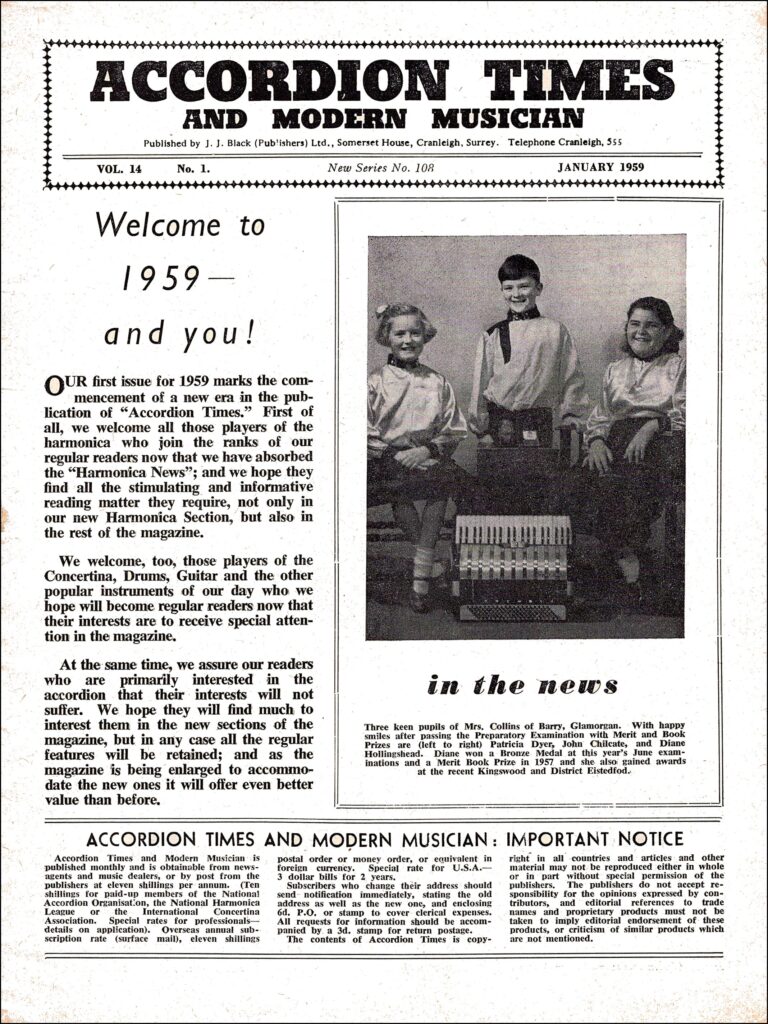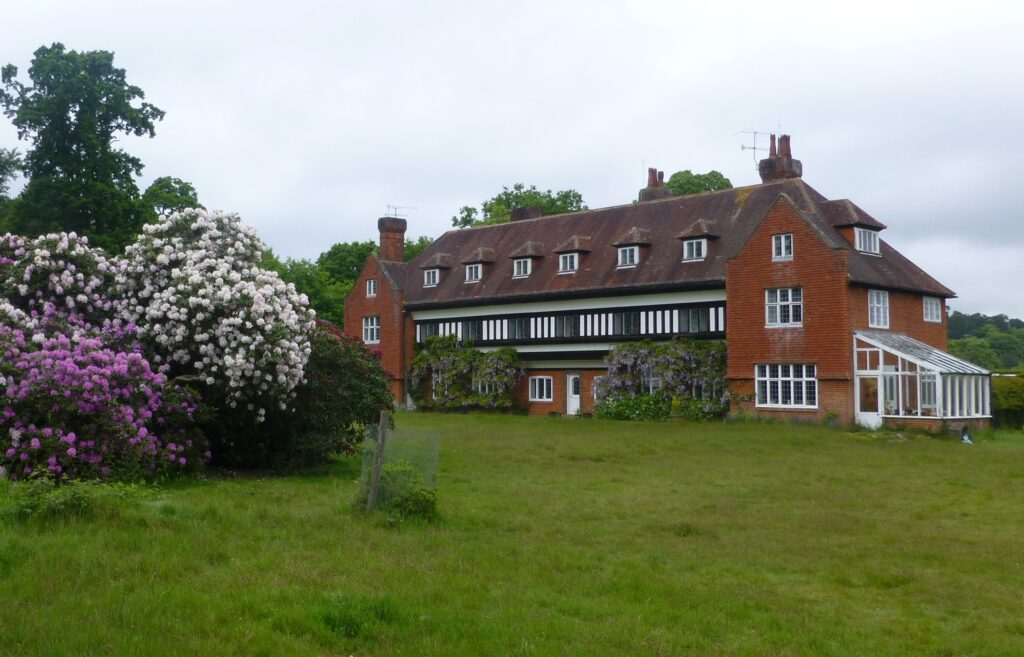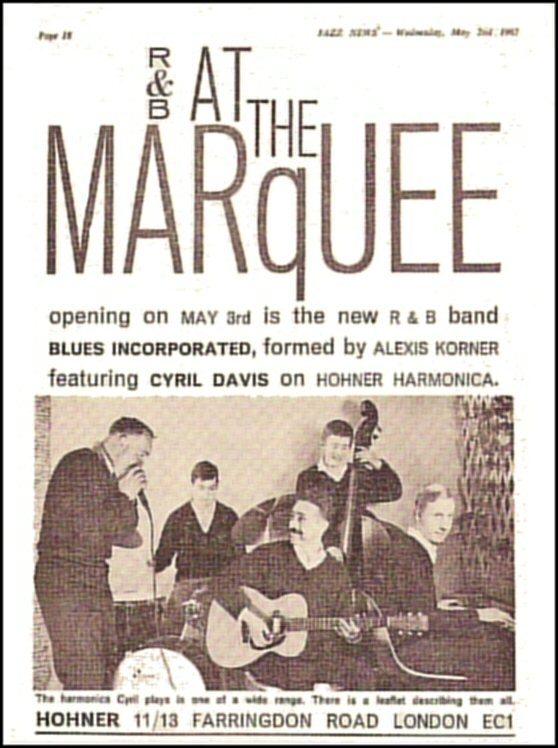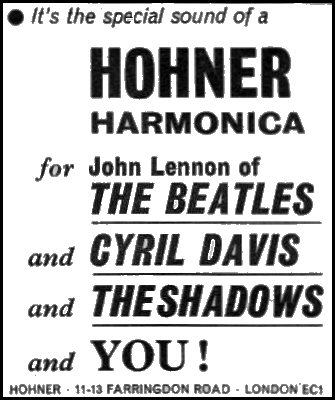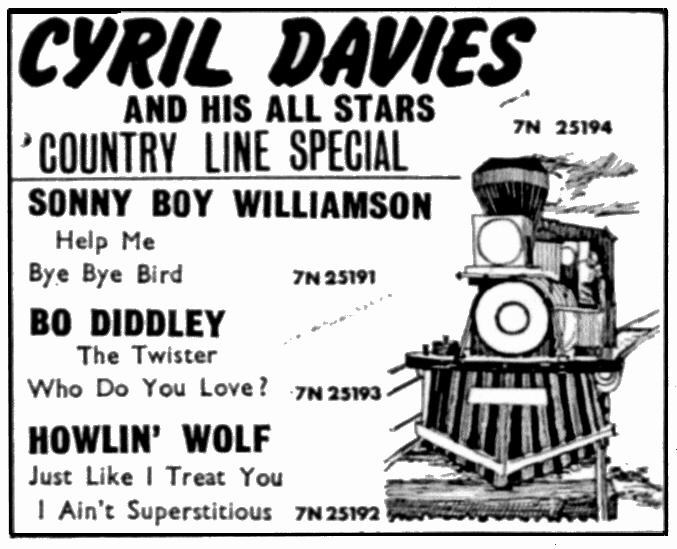HarmonicaUK started life as a Hohner marketing activity in 1935 and remained so until it was handed over to the members in 1981. It was first called the Hohner National Song Band League (SBL), then the National Harmonica League (NHL) in 1982 and finally HarmonicaUK in 2021.
After the Golden Age
The 1950s was the “Golden Age” of the harmonica on Radio, TV and the Theatre, but the decreasing enthusiasm for the harmonica bands and the increasing popularity of the guitar meant that Hohner could no longer continue to support the National Harmonica League as a separate organisation after 1958. Their solution was to move the harmonica into the much bigger National Accordion Association (NAO).
Prominent harmonica players like Douglas Tate, Brian Chaplin and John Tyler took up senior positions on the NAO committee. The change meant that harmonica meetings and competitions could continue alongside those for the accordion. The Accordion Day had been running as a national event since 1935.
The annual Harmonica Championships continued as before but as a part Accordion Day, initially in a major London venue and later in the De Montfort Hall in Leicester. The successful players continued to represent the UK in the FIH World Championships.
Harmonica News was also discontinued and some harmonica content was included into Accordion Times from January 1959. It was not much but it covered the National and International Championships. As before the majority of harmonica content was related to chromatic performers and harmonica groups. There was some tuition material and the Three Monarchs had a regular column There was little mention of the British Blues Boom apart from a piece about Manfred Mann: 5-4-3-2-1.
1967 was a significant year.
Dr Otto Meyer, who had set up and run the Hohner UK offices and teaching organisations since the early 1930s, retired,
Douglas Tate won the FIH World Championship in Karlsruhe, and Jim Hughes, Brian Chaplin, John Tyler and Carol Axford (Bloxham) all did well.
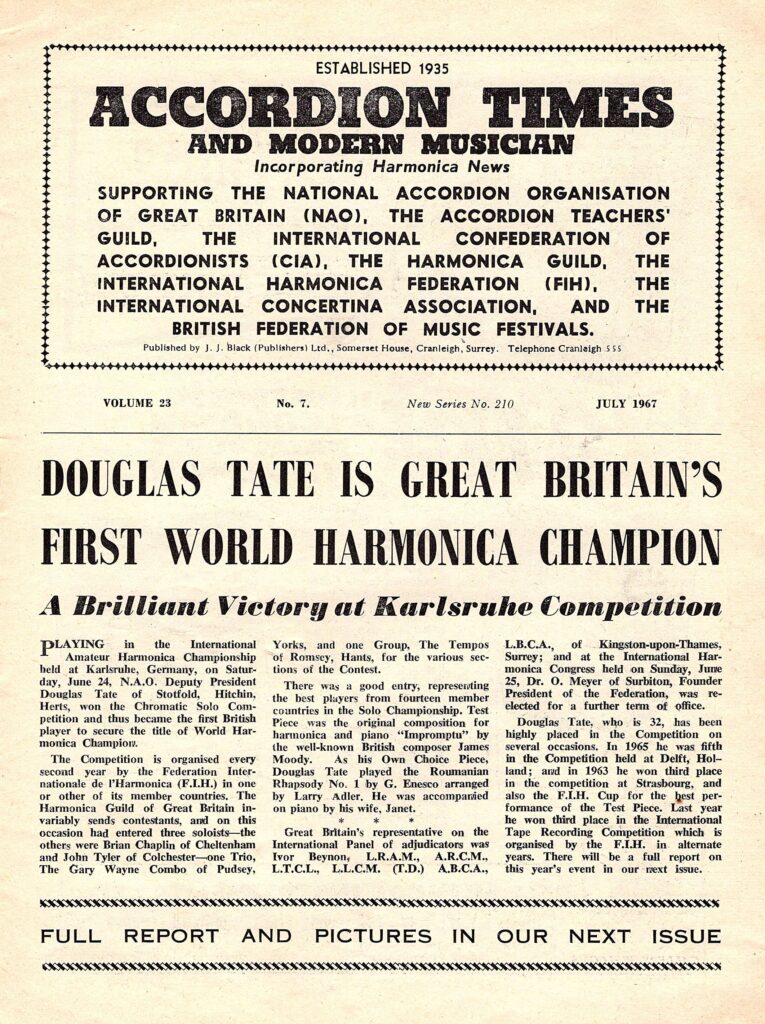
Much of the success in the late 1960s came from teaching led by Tommy Reilly. He was disappointed by what was happening and he produced a teaching course for beginners which was sold as a booklet with 2xLPs or a tape cassette. He also established the Tommy Reilly International Club, (TRIC), to raise the standards. This was really for top players and was outside of the NAO organisation.
Tommy bought a 14 bedroom house, Hammonds Wood, in Frencham, Surrey, which is where the teaching was carried out. Lessons were one to one and also residential. There is a great video by Norwegian Television of a musical weekend at the house with the Reilly family, Sigmund Groven. Jim Hughes, Carol Axford, Brian Chaplin and James Moody.
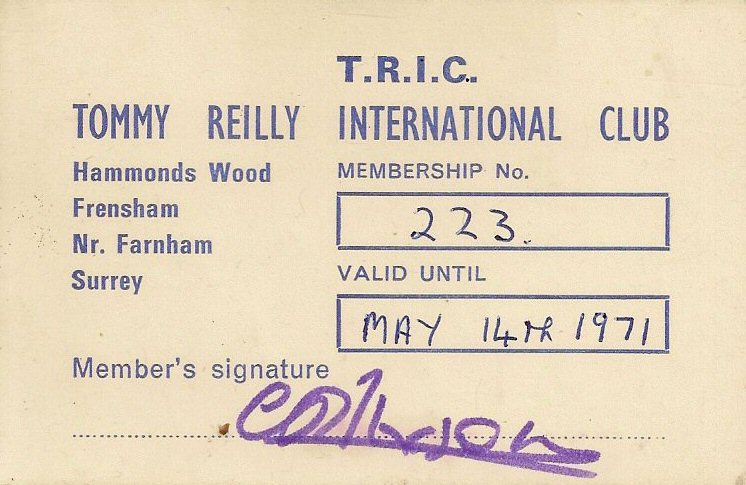
Chromatic players from around the world became members of TRIC and visited Hammonds Wood. Unfortunately TRIC was not sustainable and ended in 1972.
From the late 60s The Accordion Day was held at venues around the UK, and continued to send harmonica players to the FIH World Championships until the last one in Brighton in 1974. Hohner could no longer sustain its support for the Accordion Times and it ceased publication in the same year leaving harmonica players with no magazine or functioning organisation. Accordion Day continues to this day and Accordion Times was restarted in 1981 for accordionists by Francis Wright.
Blues harp players take over
Hohner did not encourage blues and folk music in the NAO organisation during this period but the Beatles had featured harmonica on their recordings and the UK Blues Boom was underway. Cyril Davies and Alexis Korner moved from acoustic blues at the Round House pub in London’s Soho to the launch their electric Blues Incorporated band on an unsuspecting public in Ealing Club opposite Ealing Broadway Tube Station, in London in March, 1962. This lit the fuse for the take-off of The Rolling Stones, Manfred Mann, Savoy Brown, The Pretty Things … all featuring harmonica players. Cyril’s 1963 harmonica instrumental “Country Line Special” introduced the UK’s R&B scene to a wider pop audience.
Hohner featured these harmonica players in many advertisements in the popular music press. The biggest harmonica instrumental was the crossover hit, Groovin’ with Mr Bloe by the late Harry Pitch in 1970.
As the decade came to a close, another acoustic scene was developing in the folk clubs. Country blues and Jug Band music was becoming popular and several well known blues harp players, like Steve Rye and Duster Bennett, got their start in them.
Things were to change markedly in the next few years but you will have to wait for Part 5 to find out exactly what that was.
Back to History of HarmonicaUK home index page.
Forward to The History of HarmonicaUK – Part 5
